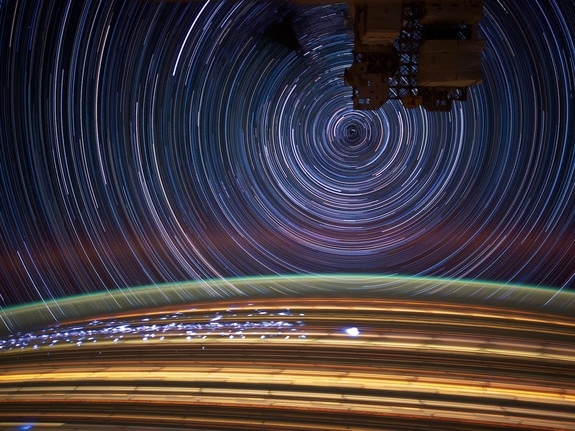Can You See Stars During the Daytime?

Throughout history, luminaries ranging from Aristotle to Sir John Herschel have reported that stars are visible during the day from the bottoms of mine shafts, tall chimneys, coal pits or cisterns. Folk tales have also told of people spying celestial pinpricks of light reflected in the bottoms of dark lakes or wells. Presumably, the ability to see stars under such conditions was thanks to a mineshaft’s smaller visual angle, or to the greater contrast provided by dark surroundings.
Unfortunately for well-wishers, most of these illustrious figures relied on second-hand accounts and never tried the experiments themselves. Had they done so, they might have found what German naturalist Alexander von Humboldt and his students did when they tested the idea on a 230-foot chimney with a 16-foot opening. To improve their chances of success, they searched for a specific celestial object — Vega, the fifth brightest star in the night sky — that was scheduled to pass almost directly overhead. They failed to see anything, even with binoculars.
A.G. Smith, who later took measurements with a photometer and photometric densitometer — which measure the brightness and transmission of light, respectively — found that the luminance and color of the sky was the same inside a chimney as outside. In other worlds, the chances of seeing stars from the bottom of a well, or any other long tube, are no better than the odds of seeing them in your backyard. So much for the well of knowledge.
Sirius, the brightest star in the night sky, would have to shine five times its normal intensity before most could see it during the day (although at least one observer has reported seeing Sirius with his naked eye, it was under ideal conditions, an hour before sunset, after he had first located the star using binoculars).
However, it is possible to see stars during the day. First, there’s the sun, our nearest star, but observing it directly is dangerous without using the proper shields and equipment. Other individual, bright stars can be seen during daylight hours through a telescope or a really powerful pair of binoculars. The trick lies in knowing exactly where to point them, so that the brightness of the star — and, most importantly, the magnification and light-gathering capacity of the lenses — can overcome the glare of refracted sunlight. Some telescopes now have “go-to” systems that make this much easier. Just punch in the object to be viewed, and the telescope automatically slews to point at its location in the sky.
Venus, which is a planet but looks a lot like a superbright star to the naked eye, is visible during the day if you know exactly where to look.
Follow Life's Little Mysteries on Twitter @llmysteries. We're also on Facebook & Google+.
Sign up for the Live Science daily newsletter now
Get the world’s most fascinating discoveries delivered straight to your inbox.









